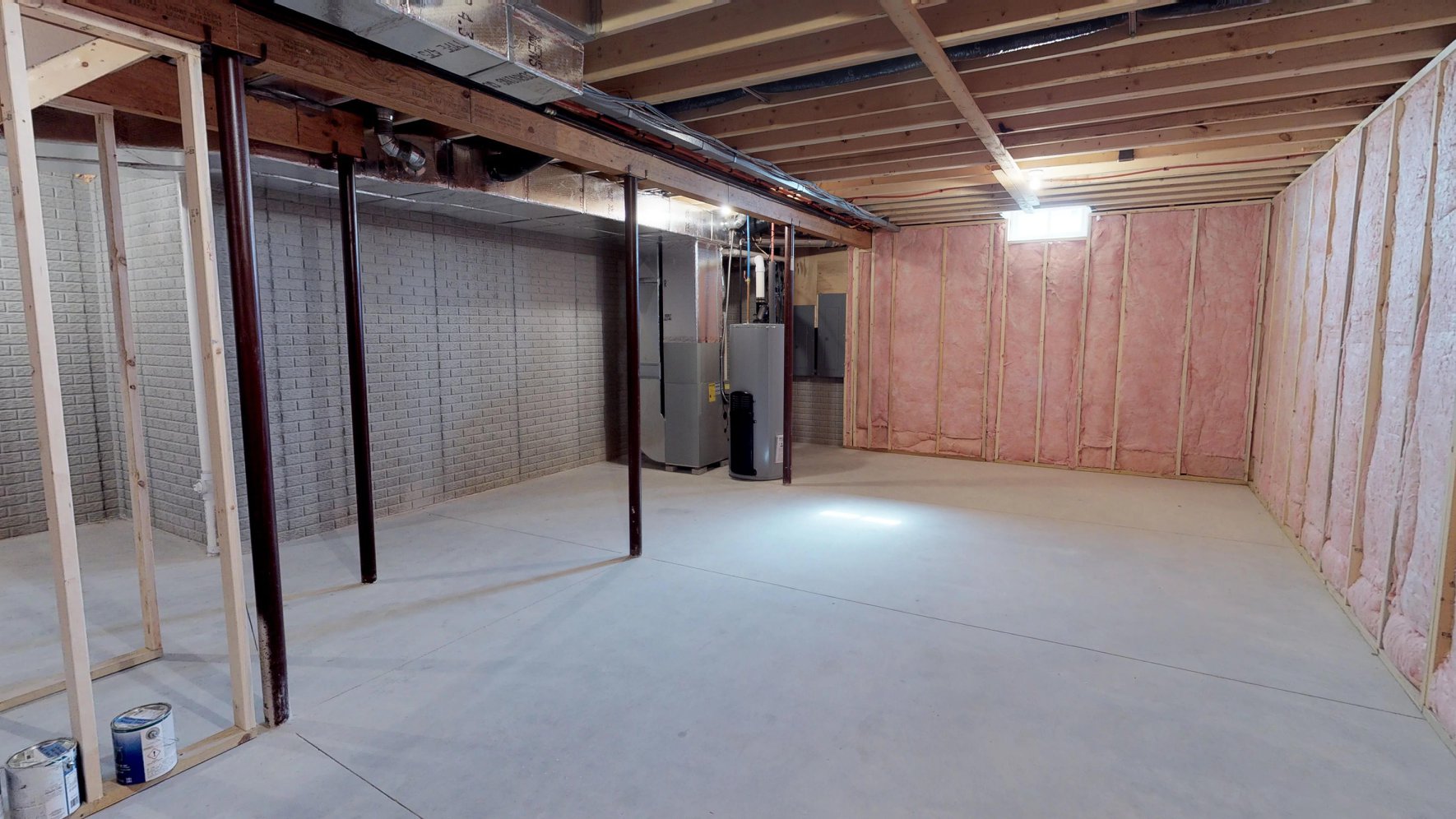You want your home to be comfortable no matter what room you’re in or what the weather is outside. Comprehensive air sealing, properly installed insulation, and high-performance windows work together in an ENERGY STAR certified home to deliver better comfort, better durability, reduced maintenance costs, and lower monthly utility bills. During construction, ENERGY STAR builder partners must meet all of the requirements of EPA’s comprehensive thermal enclosure system inspection to ensure that—
- Your new home is tightly sealed to reduce leaks and drafts, and thermal bridging across walls is minimized.
- Correct levels of insulation are selected to provide whole-house comfort.
- Insulation is installed properly to deliver the best performance.When builders meet these rigorous requirements, you get a home with a complete thermal enclosure system—a better approach to building a better home.

Air Sealing
A typical home contains a half-mile of cracks and gaps behind walls and around windows and doors, along with dozens of holes for pipes, vents, ducts, lighting, and wiring. Sealing these openings with a comprehensive air sealing package helps to significantly reduce drafts, moisture, dust, pollen, pests, and noise. The best time to seal these is during the construction process because access to critical areas can be limited once the house is completed.
ENERGY STAR builder partners seal the holes using caulks, foams, and other techniques—paying particular attention to those areas between the conditioned (heated or cooled) and unconditioned space of your home. One great example of this is around windows, where ENERGY STAR certifed homes feature caulk or foam to seal the space between the window frame and the adjacent wall framing. This is a detail that is commonly missed in many other homes and can have a real impact on your comfort and utility bills. The energy savings from comprehensive air sealing can quickly
You want your home to be comfortable no matter what room you’re in or what the weather is outside. Comprehensive air sealing, properly installed insulation, and high-performance windows work together in an ENERGY STAR certified home to deliver better comfort, better durability, reduced maintenance costs, and lower monthly utility bills. During construction, ENERGY STAR builder partners must meet all of the requirements of EPA’s comprehensive thermal enclosure system inspection to ensure that—
- Your new home is tightly sealed to reduce leaks and drafts, and thermal bridging across walls is minimized.
- Correct levels of insulation are selected to provide whole-house comfort.
- Insulation is installed properly to deliver the best performance.When builders meet these rigorous requirements, you get a home with a complete thermal enclosure system—a better approach to building a better home.
add up when you consider all the places hot or cool air can enter or escape from your home. Having a well-sealed home also means better air quality because dirt, pollen, pests, and moisture can’t get in as easily. In addition, good sealing practices help protect your home against mold and moisture damage that can be caused by condensation.
Reduced Thermal Bridging
Walls in homes are typically built with wood studs, which support the weight of the floors and roof above, help the home stand up to wind, and generally act as the structural “bones” of the home. While these components are critical to making a durable home, they often have a very low R-value (resistance to heat flow) and create thermal “bridges”—uninsulated pathways that compromise the comfort and effciency of the home. ENERGY STAR builder partners employ targeted strategies to minimize thermal bridging in walls, such as adding a continuous layer of rigid foam or minimizing excess wood studs.
Properly Installed Insulation
While it’s important to have the right amount of insulation in your home, it’s the quality of the installation that makes all the difference in getting the best performance. Properly installed insulation improves the overall comfort of your home. ENERGY STAR builder partners can choose from many different types of insulation—including fiberglass batts, dense-packed cellulose, sprayed foam, and rigid foam sheets—to ensure that you get a blanket of comfort around your new home. Insulation levels are commonly rated by R-value, or resistance to heat flow; the higher the R-value, the more resistance. Insulation levels in ENERGY STAR certified homes are independently verified by Home Energy Raters to ensure that they match the levels selected during the design of the home.
For insulation to deliver its rated R-value and deliver better comfort, it has to be installed properly. ENERGY STAR builder partners install the insulation with minimal gaps or compressions and aligned with air barriers to improving performance. Imagine wearing a down jacket that’s two sizes too big on a winter day—the cold air comes right up under the coat and chills your skin. ENERGY STAR builder partners also fit the insulation around wires, plumbing, and piping
High-performance Windows
ENERGY STAR certified homes feature windows that meet or exceed national performance standards. To satisfy this requirement, many builders choose to install ENERGY STAR certified windows in their homes. These certified windows use advanced technologies, such as protective coatings and improved frames, to help keep heat in during winter and out during summer—translating into real energy savings. They also often block damaging ultraviolet sunlight that can discolor photographs, carpets, and furnishings.Certified windows can also help reduce the potential for condensation, which can damage window sills, cause paint to crack, and encourage mold growth.
Building a Better Future
An ENERGY STAR certifed new home delivers better energy effciency and so much more. An ENERGY STARcertifed home is built better and built to last because thebest, tried-and-true, integrated construction practices are used from the ground up. The result is better quality and durability, better comfort, better systems, a better value for today, and a better investment for tomorrow—plus a label backed by EPA. In short, better is better.
Join the millions across America already making a difference at energystar.gov. For 25 years, people across America have looked to EPA’s ENERGY STAR® program for guidance on how to save energy, save money, and protect the environment. Behind each blue label is a product,building, or home that is independently certifed to use lessenergy and cause fewer of the emissions that correspond to negative health and environmental impacts. Today, ENERGY STAR is the most widely recognized symbol forenergy effciency in the world. Since 1992, the programand its partners have helped families and businesses save $430 billion on energy bills and 4.6 trillion kilowatt-hours
of energy, while achieving broad emission reductions— including 2.8 billion metric tons of greenhouse gas emissions. EPA’s ENERGY STAR® is the simple choice forenergy effciency.
inside the walls to not leave empty, uninsulated spaces that could lead to hot or cold spots. These practices help maintain consistent temperatures throughout your house, reduce energy use, and improve comfort, especially on the hottest and coldest days.
